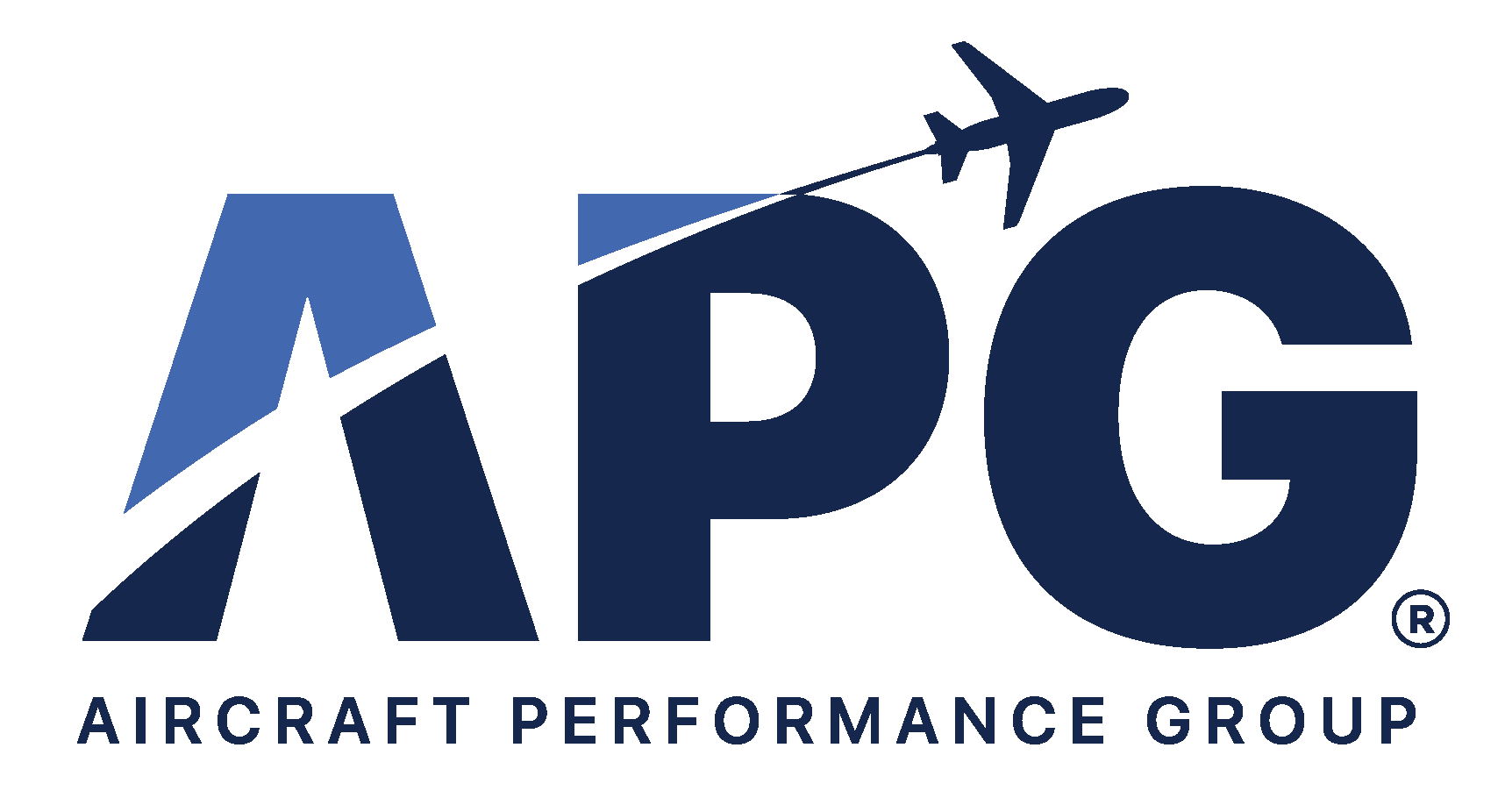Wet and Contaminated Runway Performance: Planning for Safety and Compliance

When a runway is wet or contaminated, it isn't just an inconvenience—it's a critical safety factor. Many aviation accidents and incidents can trace their root causes back to miscalculated or misjudged performance on wet or contaminated surfaces.
For business aviation operators, corporate flight departments, and Part 135 dispatchers, understanding how runway surface conditions affect takeoff and landing performance is not merely academic. It is central to operational safety, regulatory compliance, and passenger confidence.
Accurately planning for wet and contaminated runway conditions demands more than checking a weather METAR. It requires rigorous analysis of aircraft performance data, regulatory requirements, airport-reported runway conditions, and environmental forecasts.
Learn why wet and contaminated runway performance matters, how to interpret and plan for these conditions, and how modern tools such as APG’s Runway Analysis is support operators in maintaining the highest safety standards—even when the weather won't cooperate.
 Business aviation demands accurate planning for wet and contaminated runway conditions to ensure safety and compliance.
Business aviation demands accurate planning for wet and contaminated runway conditions to ensure safety and compliance.
Understanding Wet and Contaminated Runway Conditions
At first glance, “wet” or “contaminated” may sound like subjective terms. But aviation regulators, airport operators, and aircraft manufacturers use precise definitions—because those differences affect performance dramatically.
A wet runway is defined by ICAO Annex 14 and FAA guidance as one where the surface is covered by any visible dampness or water less than 3mm deep that does not give a reflective appearance. While it offers better braking than true contamination, it still requires performance penalties.
A contaminated runway, on the other hand, is when more than 25% of the surface is covered by water, slush, snow, ice, or other substances at a depth and consistency that affects braking and directional control.
The FAA’s Runway Condition Assessment Matrix (RCAM) standardizes how airports and pilots communicate these surface conditions. Using a 6-to-0 scale, RCAM translates observations of contaminants into expected braking action, helping dispatchers and pilots align their planning.
For example:
- 6 = Dry
- 5 = Good braking on damp or wet surface
- 3 = Medium braking on slush or snow
- 1–0 = Poor to Nil braking on ice or severe contamination
Understanding these codes is vital for interpreting NOTAMs and planning performance corrections.

FAA’s Runway Condition Assessment Matrix (RCAM) standardizes reporting of wet and contaminated runway surfaces. Source: FAA RCAM Guidance
Why Wet and Contaminated Surfaces Matter for Aircraft Performance
The presence of water or contaminants on a runway doesn't just slow you down—it fundamentally alters the physics of takeoff and landing.
Braking effectiveness declines on wet or contaminated surfaces. The coefficient of friction drops significantly, reducing deceleration rates. In landing, this translates to longer stopping distances and the potential for runway overruns.
Directional control is also compromised. Crosswind limits may need to be reduced on wet or icy runways. Hydroplaning can occur on wet surfaces, further eroding control authority.
For takeoff, contamination affects acceleration performance. Slush or standing water creates drag that increases the ground roll, while reduced friction can make rejected takeoffs riskier due to longer accelerate-stop distances.
Regulatory authorities recognize these risks. For instance, the FAA recommends (and Part 135 requires) that operators apply at least a 15% wet runway factor to landing distances. This means you can't just use dry performance numbers—you must calculate with safety margins in mind.
Learn how APG’s Runway Analysis supports these complex calculations with built-in safety margins and condition corrections.
Regulatory Requirements and Standards
Operators in the business aviation space often work under multiple regulatory frameworks, including FAA Part 91, Part 135, and international ICAO guidance.
Part 91 operators have more discretion, but are still expected to plan safely. Regulatory bodies expect professional standards of care in calculating performance with realistic runway condition assessments.
Part 135 operations face stricter rules. FAA guidance mandates applying wet and contaminated runway corrections. For example:
- 15% wet runway factor to landing distance calculations (FAA Part 135.385(b)).
- Contaminated runway performance must use manufacturer data or approved methods accounting for the specific contaminant type.
EASA CS-25 and ICAO Annex 14 similarly emphasize operator responsibility to ensure takeoff and landing performance remains within safe margins even on contaminated runways.
Manufacturers typically publish performance data for contaminated conditions in the Aircraft Flight Manual (AFM) or supplemental manuals. Operators must ensure these corrections are included in dispatch release planning and communicated to crews.
Interpreting Runway Condition Reporting and NOTAMs
Modern airports provide increasingly standardized runway condition reports, but interpreting them requires skill.
FICON (Field Condition) NOTAMs detail surface contaminant type, depth, and RCAM code. For example:
“RWY 18 FICON 5/5/5 100 PCT WET”
Means the entire runway is wet with braking action code 5 (“Good”).
Dispatchers and pilots must read these NOTAMs critically, considering:
- Surface coverage percentages
- Contaminant types (water, snow, ice, slush)
- RCAM codes and braking action reports
- Changes due to ongoing precipitation or temperature
Braking action reports from previous pilots offer subjective but valuable insights. However, they can be inconsistent and degrade over time, requiring dispatchers to monitor conditions up to the point of departure and update performance planning as needed.
Calculating Takeoff Performance on Wet and Contaminated Runways
Takeoff performance on a wet or contaminated runway is not a simple plug-and-play calculation.
On wet runways, FAA Part 135 operators typically apply a 15% safety factor to the dry accelerate-stop distance. This accounts for degraded braking but assumes no standing water or contamination.
For contaminated runways, things get more complex. Manufacturer-supplied contaminated runway data (often from the AFM) is essential. This data accounts for:
- Increased ground roll due to drag from slush, standing water, or snow.
- Reduced braking effectiveness in rejected takeoffs.
- Adjusted V-speeds in some cases.
Planning must consider:
- Runway length remaining after applying performance corrections.
- Accelerate-go vs. accelerate-stop performance in degraded conditions.
- Aircraft weight, CG, and balance.
- Engine-out procedures in the event of a failure during takeoff.
Failing to account for these factors can leave operators dangerously exposed.
Genesis PRO Performance automates wet and contaminated corrections, making these complex calculations straightforward for dispatchers and crews.

APG's Genesis PRO Performance automates wet/contaminated runway corrections for takeoff and landing calculations.
Planning Landing Performance for Wet and Contaminated Surfaces
Landing on a wet or contaminated runway is arguably even more challenging—and more accident-prone.
Landing distance required increases substantially on contaminated surfaces. FAA guidance requires factoring wet runway corrections even for a wet-but-not-contaminated surface. For contaminants like slush, ice, or packed snow, manufacturers provide separate landing distance data that must be used.
Key considerations include:
- Runway condition code and its corresponding braking coefficient.
- Manufacturer data (AFM contaminated landing charts).
- The actual runway length available, factoring declared distances like LDA.
- The need for go-around or diversion if conditions deteriorate below minima.
Dispatchers must ensure flight releases consider these performance factors, select suitable alternates with acceptable runway condition expectations, and communicate evolving conditions to the crew.

Landing distance increases significantly with contamination, demanding accurate planning. Source: AOPA
Practical Dispatcher and Crew Considerations
Professional flight departments and operators don’t just rely on raw numbers. They develop Standard Operating Procedures (SOPs) to ensure safe, repeatable planning and operational decision-making.
Dispatchers should:
- Review weather forecasts, NOTAMs, and Field Condition reports.
- Incorporate RCAM codes into performance planning.
- Calculate multiple scenarios if conditions may deteriorate.
- Brief crews on alternates and rerouting options.
Crews should:
- Verify runway conditions with ATIS and direct communication.
- Be prepared for dynamic decision-making, including go-arounds and diversions.
- Understand aircraft systems (like autobrakes, anti-skid) and their limitations on wet/contaminated surfaces.
Training programs must emphasize realistic scenarios, including rapid weather changes, poor braking reports, and in-flight re-planning for unexpected contamination at destination or alternates.
Real-World Case Studies and Lessons Learned
The importance of correctly planning for wet and contaminated runway conditions is underscored by multiple real-world incidents where miscalculations or overlooked data led to serious consequences.
One notable example is the Gulfstream G-IV overrun at Bedford, Massachusetts, on May 31, 2014. During a rejected takeoff at Laurence G. Hanscom Field, the aircraft overran the runway and struck an antenna array, resulting in a post-crash fire that killed all seven occupants. The NTSB investigation found that the flight crew failed to conduct a flight control check and did not recognize they had inadequate stopping distance on the wet runway under the circumstances. This tragedy emphasized the critical need for thorough pre-takeoff planning and verification, including factoring runway condition into accelerate-stop distance calculations.
Another instructive case is the Beech 400A runway overrun at Richmond Municipal Airport, Indiana, on February 11, 2019. The flight crew continued an unstable approach to a snow-contaminated runway in conditions that exceeded the airplane’s landing performance capabilities. The aircraft overran the runway end, though fortunately without fatalities. The NTSB concluded that inadequate performance planning for the contaminated runway surface was a key factor in the incident, highlighting the necessity for dispatchers and pilots to rigorously apply manufacturer-provided contaminated runway data and monitor real-time surface conditions through FICON NOTAMs and braking action reports.
These cases are stark reminders that wet and contaminated runway conditions demand precise planning, clear communication between dispatchers and crews, and unwavering adherence to performance limitations. By learning from these events, operators can strengthen their safety culture and reduce the risk of similar outcomes.
The FAA and NTSB consistently emphasize:
- Up-to-date performance planning.
- Accurate, timely runway condition monitoring.
- Crew/dispatcher coordination to adapt to changing conditions.

Real-world incidents highlight the consequences of underestimating wet and contaminated runway performance. Source: AIN
How APG Tools Simplify Wet and Contaminated Runway Planning
At Aircraft Performance Group, we understand the complexity of modern dispatch and flight planning—especially when environmental conditions add risk. Our tools are built to simplify this complexity without sacrificing precision. Genesis PRO Performance applies wet and contaminated runway corrections, integrating manufacturer data and operator-specific safety factors. Genesis PRO Performance also connects dispatchers and flight crews with real-time runway condition data, supporting dynamic updates en route. APG’s Runway Analysis delivers pre-calculated declared distances, adjusted for contamination and weight/balance, ensuring compliance even for unfamiliar alternates.
By embedding these advanced calculations into a single workflow, APG helps operators not only plan legally—but plan safely.
“Want to simplify wet and contaminated runway performance planning? Request a Demo of APG’s Genesis PRO Performance.”
Conclusion
Wet and contaminated runway performance isn’t optional knowledge—it’s a core part of safe, compliant, professional aviation.
Understanding RCAM codes, interpreting FICON NOTAMs, applying manufacturer data, and planning for realistic conditions are essential steps for dispatchers and crews. By adopting clear SOPs, investing in training, and using advanced planning tools, operators can reduce risk and ensure passenger safety—even when the weather turns against them.
APG is committed to supporting operators in these critical areas. Our solutions are designed to turn complexity into confidence, helping you plan with precision, collaborate effectively, and deliver the highest standard of safety your passengers expect.
Ready to take the guesswork out of wet and contaminated runway planning? Contact Aircraft Performance Group today to learn how our advanced flight planning tools keep you compliant and safe—even in the most challenging conditions.


